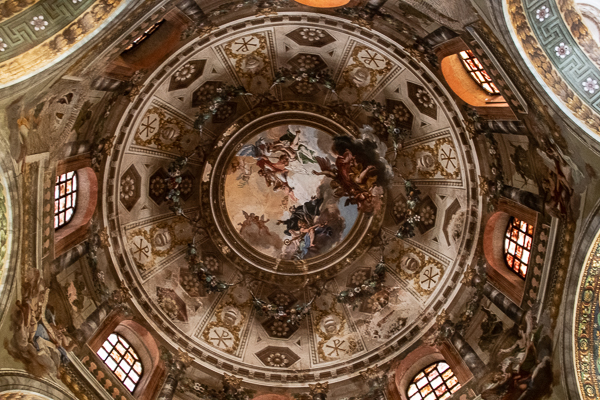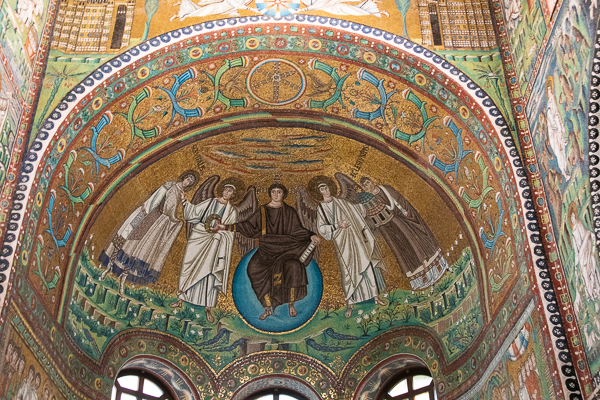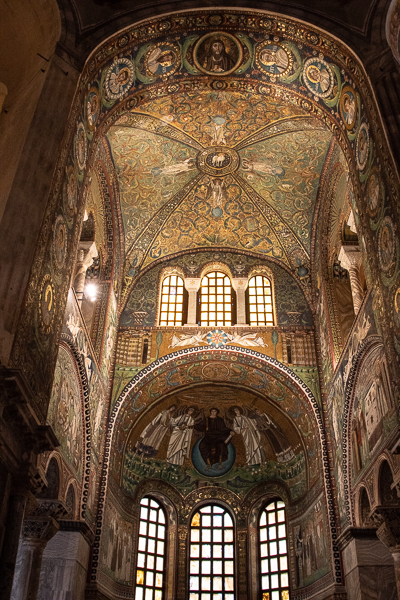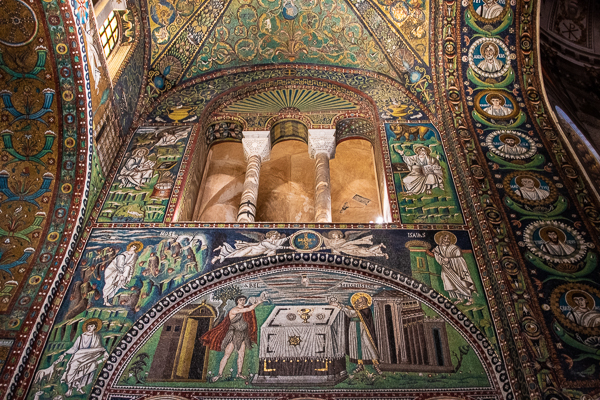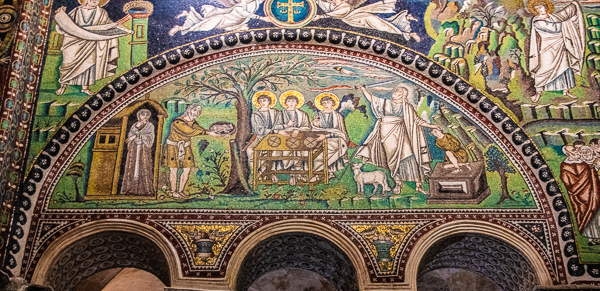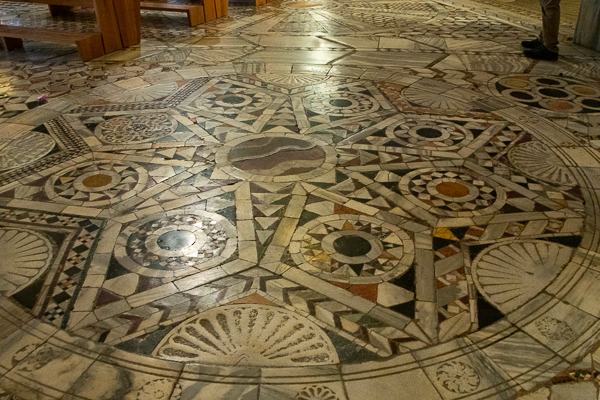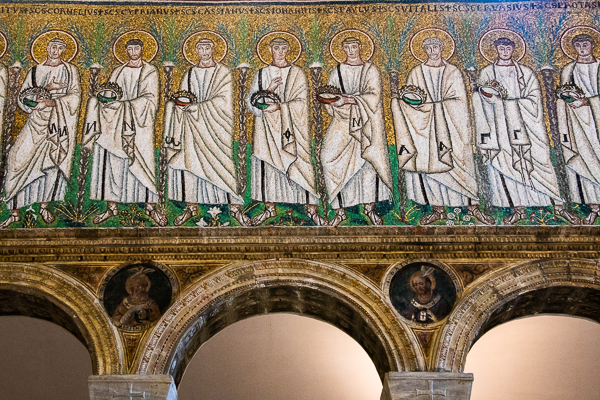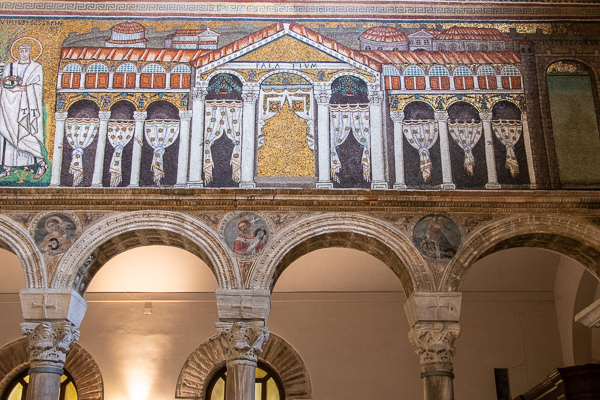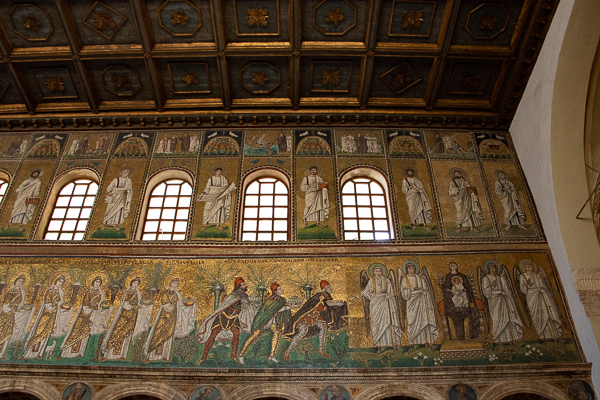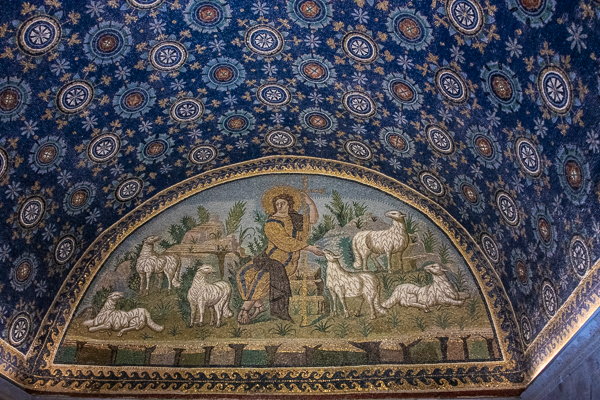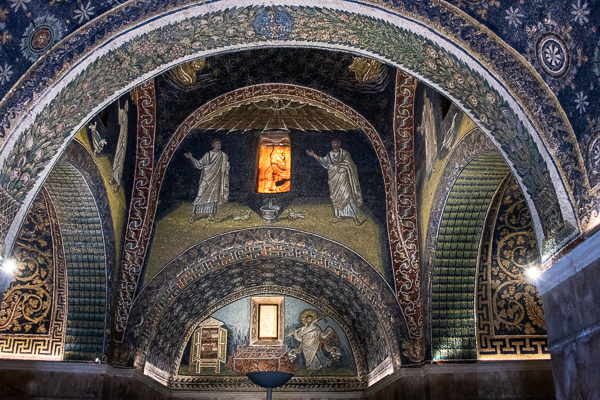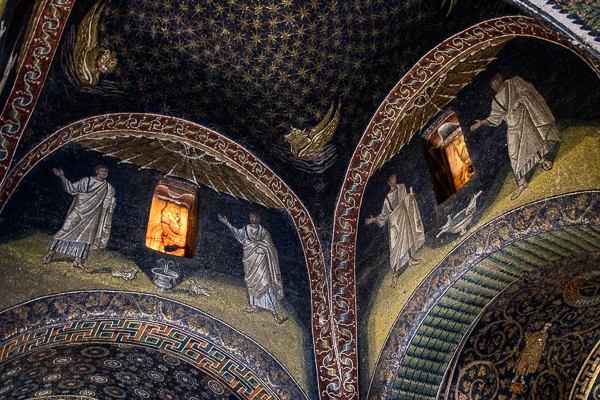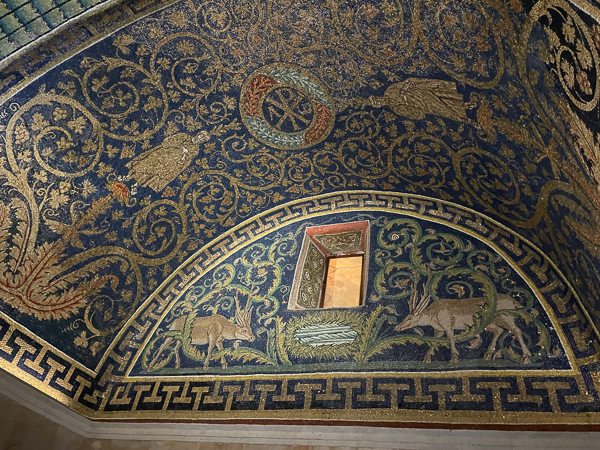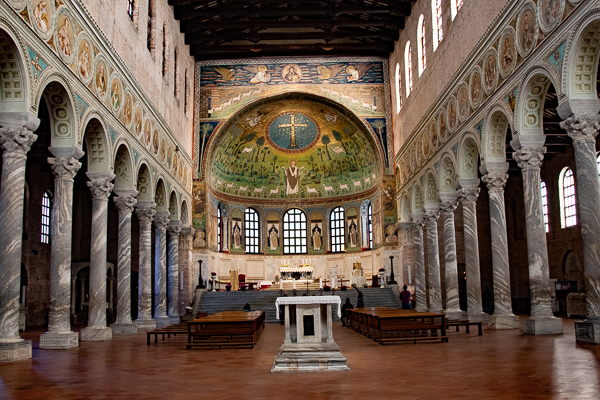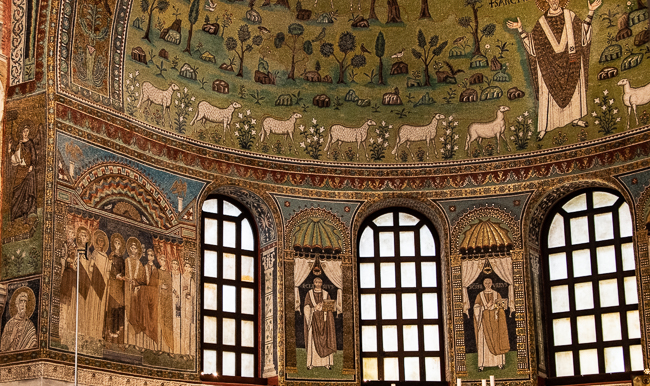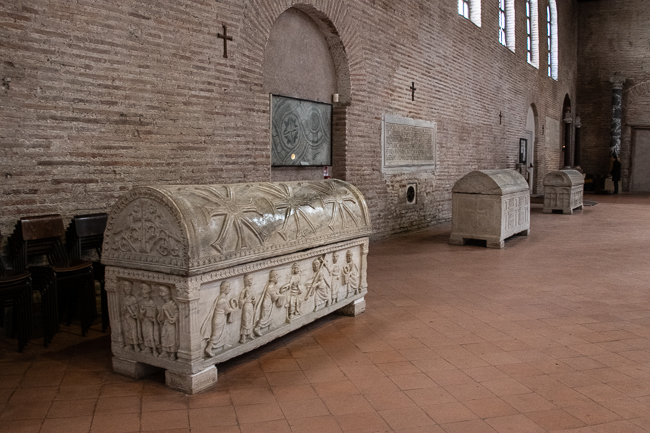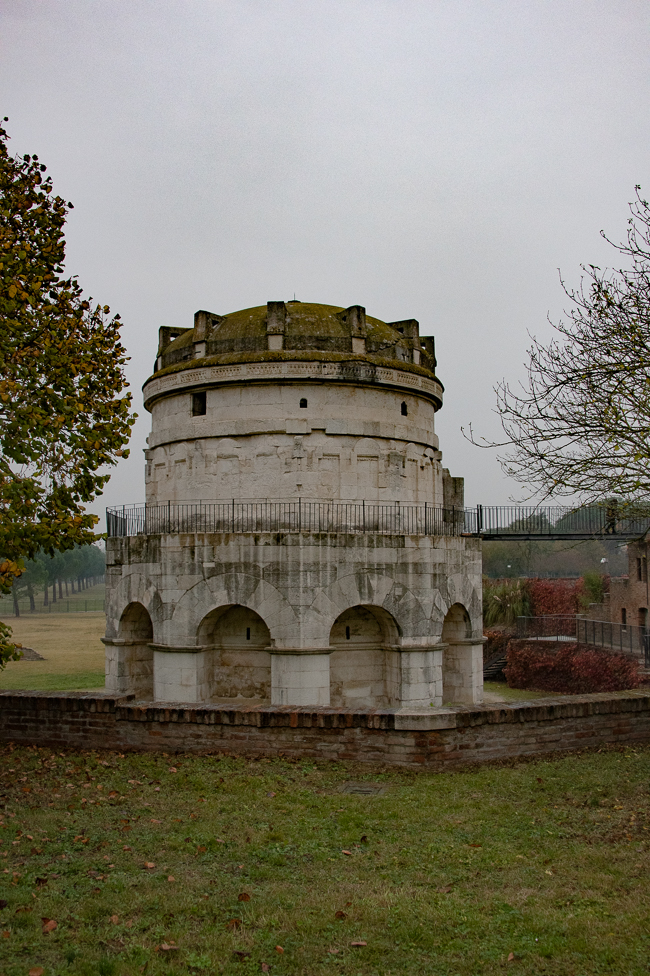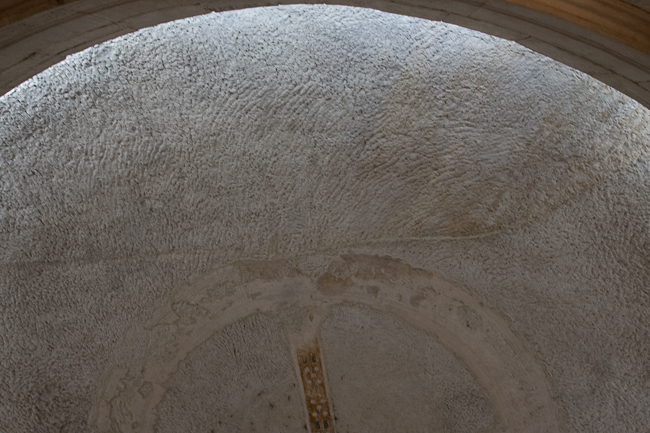November 2022
Basilica di San Vitale
Gustav Klimt visited Ravenna twice in 1903, after which began the period of his painting called “aureus”. Many speculate that he did so after seeing the gold of the mosaics in the Basilica di San Vitale.
Yesterday I came here. It was raining and I was safe and sound.
It rained all night even under the window, even in my room.
Today the sun came out, at last. Ravenna is full of misery, and mosaics of an exceptional beauty.
Regards to you and to others
Gustav
[Gustav Klimt to Emilie Floge, December 2, 1903]
Bishop Ecclesius built San Vitale in 525 after his journey to Constantinople. One must assume the mosaics of Hagia Sophia had an influence on the mosaics in this church.
*
Basilica di Sant’Apollinare Nuovo
Saint’Apollinare Nuovo was built (493-526) by Theoderic, king of the Goths, as the palatine basilica. Despite its former Arian* cult, the inner mosaic decoration show some interesting history. Around 561, after the Goths were run out of town, the church was converted to Catholic orthodoxy (Justinian’s Edict) and consecrated with the name of St. Martin in “Gold Heaven” because of its shining gold lacunar ceiling.
As you see below the damnatio memoriae of the Theodoric’s court, was removed from the palatine basilica and replaced with the curtains.
Mausoleum of Galla Placidia
The Mausoleum of Galla Placidia must be considered one of the crown jewels of Ravenna.
Built by the empress Placida during the first half of the 5th century it was conceived as a burial site. It never actually fulfilled its purpose. Despite the name Empress Galla Placidia (d. 450) was not buried in the building, she died in Rome and was buried there.
Basilica of Sant’Apolinare in Classe
The Basilica of Sant’Apollinare was commissioned between 535 and 538 CE. It was consecrated on May 9 549 CE by Archbishop Maximianus.
The Basilica is the town of Classe, which, in Roman times was a port area that housed the permanent second fleet of the Roman Empire’s Navy. Classe derives from the Latin word Classis which means “fleet”.
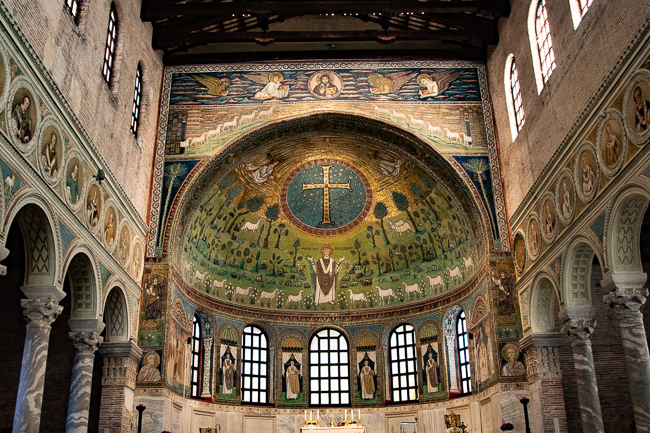
In the lower part of the apse, is the figure of Sant’Apollinare in prayer, between two flocks of lambs .In the space between the windows, four bishops, the founders of the main Ravenna Basilicas, are depicted: Ursicinus, Ursus, Severus and Ecclesius.
Built over a burial ground in use until the 4th century, it was dedicated to Sant’Apollinare, the first bishop of Ravenna, his remains reside in the Basilica.
Mausoleum of Theodoric
While not filled with mosaics this monument is rather incredible.
Theodoric the Great was an Ostrogothic king that ruled Italy from AD 493 to 526. Considered a barbarian – as the Ostrogoths originated from outside the borders of the Roman Empire – the rule of Theodoric and the monumental buildings he erected in Ravenna defy the oft misused term “barbarian”.
Theodoric was entombed here after his death in AD 526 but his body was removed in AD 561 after Justinian condemned Arianism.

These have been described as handles for lifting the dome onto the building, all highly speculative. On the twelve square arches are the names of eight Apostles and four Evangelists
The mausoleum subsequently became an oratory and also served as a lighthouse. Silting caused by the nearby river saw the mausoleum mostly submerged until the nineteenth century.
The Mausoleum of Theodoric was built from carved stone (and not brick or large stone blocks). The stones were imported from Istria, including the solid circular stone that forms the roof of the building. This roof stone is 11 meters in diameter and around a meter thick – it remains unclear how this 230-ton stone was transported from Istria or lifted onto the top of the building.
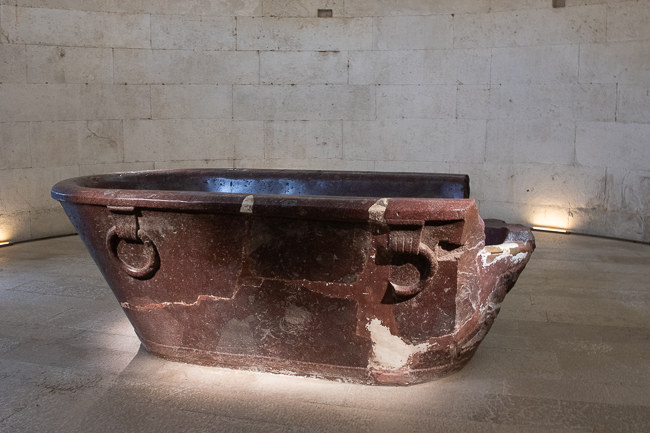
Theodoric is believed to have been buried in a sarcophagus made of red porphyry. If Theodoric’s body was actually here, it only remained for a short while before his bones were removed from the complex and scattered by the Byzantine general Flavius Belisarius, the mausoleum itself converted by Flavius Belisarius into a Christian oratory.
UNESCO
All eight buildings – the Mausoleum of Galla Placidia, the Neonian Baptistery, the Basilica of Sant’Apollinare Nuovo, the Arian Baptistery, the Archiepiscopal Chapel, the Mausoleum of Theodoric, the Church of San Vitale and the Basilica of Sant’Apollinare in Classe, constructed in the 5th and 6th centuries are UNESCO World Heritage Sites.
*Arianism is a Christological doctrine first attributed to Arius a Christian presbyter from Alexandria, Egypt.
